What kind of message are you sending your students with your yoga adjustments?
48“Here I am, resting in a reclining bound angle pose. All of the sudden I feel this incredible pressure on my inner thighs, and as I open my eyes with a jolt, I see my male yoga instructor leaning over me and pressing down on my spread legs. I enter a state of panic” – this is a story from a friend of mine who decided to check out a new yoga studio. She never went back.
We’ve all heard horror stories about yoga adjustments gone wrong – students get hurt, feel violated, and so on. But even when the student seems happy, it makes you wonder. I read a review on Yelp recently of a local yoga teacher: “Her adjustments are spot on – she is so strong!” Strong?! This scares me. Does it mean that the teacher is physically manipulating the student? I also knew a yoga teacher who liked to lift his students while in a pose for his own amusement (and got very defensive when I asked him about it).
There are always discussions in the yoga community about what kind of adjustments are appropriate. Most teacher trainings offer some sort of “hands-on” training. There are numerous books, videos and articles on the subject.
In my tradition (viniyoga) we don’t adjust at all. The most you will ever see me do is use gentle touch to reassure a student, or to show where the movement is supposed to take place. We use verbal cues extensively, adapt the form of postures so that the student could get the most out of it, and use light touch when necessary.
Here is why I do it this way:
1. Who’s practice is it?
Every student who comes to class needs to take ownership of her practice and understand what she is trying to get out of each pose, how to get there, and how to troubleshoot when necessary. A student needs to find her own way into the posture. Ultimately, it is not about external arrangement of the limbs, but about the depth of the inner experience.
2. Achieving a deeper form of the pose is not always necessary.
More often then not, adjustments are used to get a student deeper into the pose. However, there is always a reason why she cannot get there herself: maybe she is not ready, maybe she is nursing a past injury, maybe she is just not interested! Just because I can bend all the way down in Paschimottanasana, doesn’t mean that I want to. I said it many times before and I will say it again – deeper is NOT always better! And folding somebody into the pose is ALWAYS risky.
3. When the student’s safety is compromised, it’s better to adapt the pose, then to manipulate the body to fit into the pose.
New students often do not understand how to arrange themselves in the pose safely and get the most out of it. This is perfectly understandable. If that’s the case, we need to work on increasing their body awareness, not just arranging their body parts. It is much more productive to explain what you are looking for, to adapt the form of the pose to accommodate the student and use light touch to bring their attention to the key areas. We always want to empower the student, to show them that they can facilitate meaningful change on their own, so that they are not dependent on the yoga teacher.
It is my opinion that you have to have extensive training to be able to manipulate someone’s body safely. If you are not a trained physical therapist, chiropractor and other manual therapist, you are running the risk of seriously hurting the student, even if you mean well.
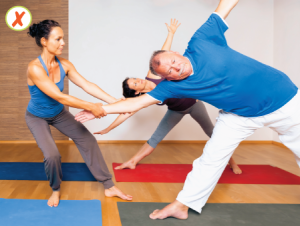 If you do choose to adjust, here are some pointers to keep in mind:
If you do choose to adjust, here are some pointers to keep in mind:
- Don’t sneak up on the student from behind; make sure that they are aware that you are approaching them.
- Don’t touch anywhere near the private parts; we want the student to feel safe (BTW, hips may feel private to some folks).
- Do not push, pull, torque, twist, lean or lift – in short, don’t manhandle your students. Let’s show some respect.
Touch is a form of communication. So the question is – what is it that we want to communicate to the student through our touch? Is the message “I know better what you need”, or is it “Let me support you in your own exploration”? After all, who knows better how the pose feels on the inside? The student. Who is aware of the personal history of injuries and limitations? The student. Who can feel how far the body is willing to go? The student.
I believe that students come to yoga classes for the extra pair of eyes, not the extra pair of hands. If they become dependent on teacher’s adjustments, it can inhibit their ability to do their own work.
If you choose to adjust students in your yoga classes, please tell me – why? I would love to hear your side of the argument. If you choose not to adjust, I would love to hear from you, too – why not? Let’s have a conversation! (Please leave a comment below)
[jetpack_subscription_form]
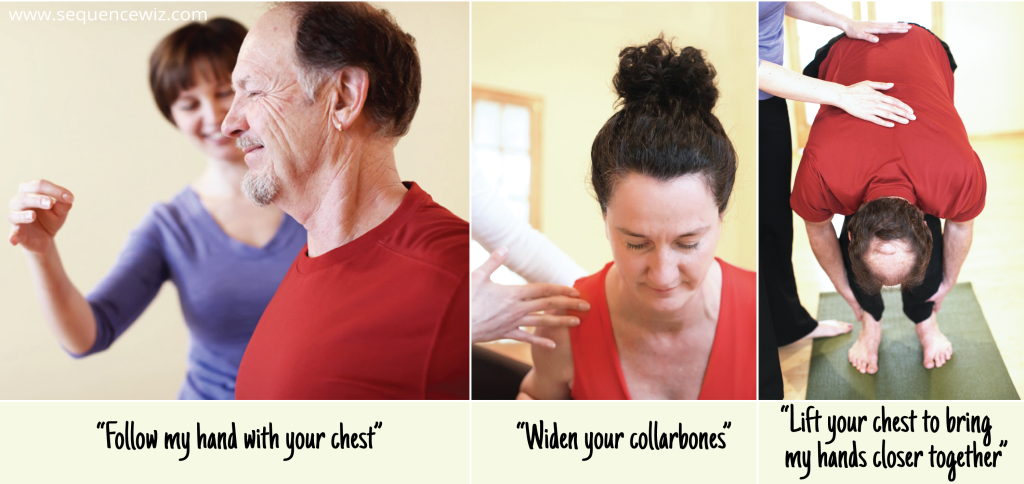
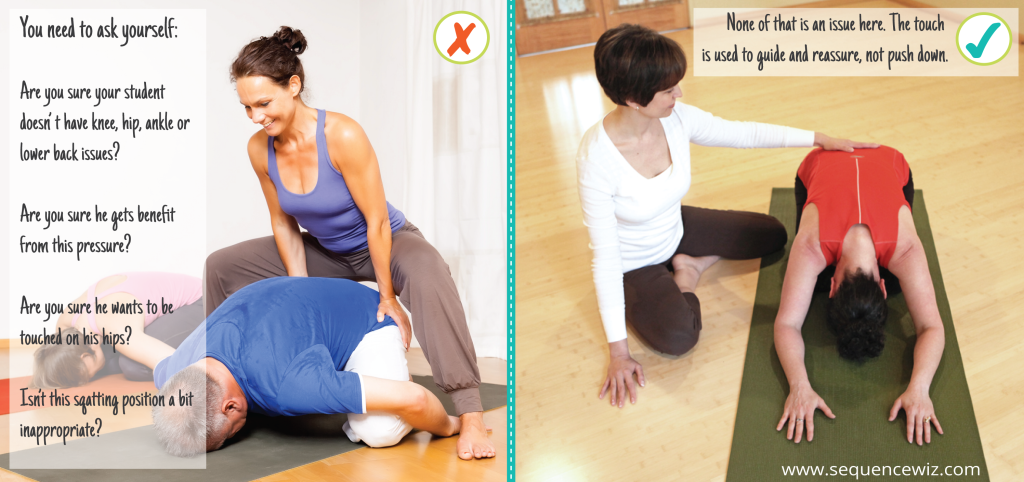
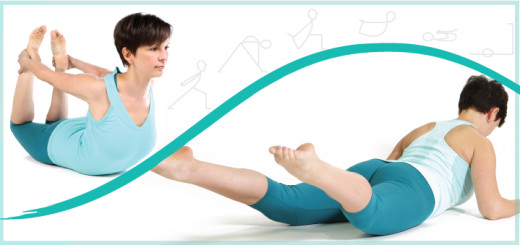
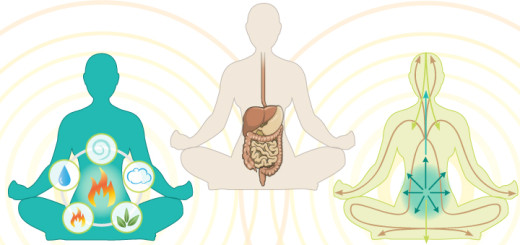

















Olga, I am also trained by Gary. I thank you for putting our message out there…. exp. the adjustment piece. Students want to be corrected…(especially those from other traditions) they give up their authority and assume they are ‘wrong’. I appreciate how you have expanded the dialogue on this topic and I plan to bring it up in classes next week.
Thank you Kay! Exactly! We don’t want to give them the message that they are “wrong” or “incapable”.
I too am trained by Gary, but even before that I never manually adjusted my students. My 200 hour training was in a different lineage and during that training one of the teachers “adjusted” a student in jathara parivrtti causing serious spinal injury. She had to drop out of the training because of it. I am of the belief, as you are, that a student gets way more out of it if they find their own muscles and their own pose. Thanks for your wonderful blog – I look forward to it every week!
Thank you for your comment and your kind words Rhett! Stories like the one you shared horrify me, and so does cavalier sort of attitude toward adjustments that I see sometimes.
I trained with Paul Harvey in the UK – the slightest touch to reassure, but never pushing someone into the ‘correct’ position. Insightful article. Thank you!
Hi Liz, great to hear! I like the quotes around ‘correct’ – that’s how I feel, too. 🙂
Hello Olga, thanks a lot for your blog. I find it really interesting.
I am a practitioner of Iyengar yoga from Spain. In the classes i attend, the teacher usally does lots of adjustments to us, which i find very usefull most of the times.
I agree with you, that before touching a student, the teacher should ask him/herself if that´s completely necessary. Most of the times, the correction can be made by voice, and that should be enough. But, there are times, when i dont really understand the position where my body parts are suppose to be, or my fears make me be too conservative, so i dont push myself too much.
In this cases, when the teacher adjusts my body, makes me understand how the posture should feel, and makes me see that my body is ready to go a little further, it´s just my fear that keeps me back. So, I do think adjustments really can help a student´s practice, but i also think that the teacher should be very well prepared, and should have a deep understanding of the muscles chains, and anatomy in general.
Regards, Alicia
Hi Alicia, thank you for your comment! You bring up an interesting point – fears holding someone back. I completely agree that it’s important to challenge ourselves in our yoga practice (reasonably). It’s such a fine line to walk on, though. A friend of mine was doing a Camel pose and couldn’t touch her heels. Her yoga teacher didn’t adjust, but became a cheerleader: “You are almost there, another half an inch, yes, yes!” So my friend did reach her heals and threw her back out. Was in much pain for weeks. I guess my point is that you, the practitioner, should ultimately decide how far you need to go. And you need to have a very open and trusting relationship with your teacher, who should be aware of your limitations to progress incrementally and mindfully.
Loved the article! I am a Bikram teacher. We were told NEVER to touch a student. I have, on occasion, touched lightly with a finger tip; even then, I asked if it was ok. I talk to new students before class to find out if they have any physical issues, I also watch them in the first few poses to see where they may be tight or restricted, so I have an idea of what’s up when we go further into the class and the body. I especially love point #3….do not manipulate the body to fit into the pose. I like for my students to experience the pose in a good way! Thank you so much for your teaching tips; I’ve enjoyed each and every one!!!
Thank you Kimberly! This is such an important point – watching students from the beginning to assess their limitations! It definitely dictates how we “go further into the class and the body” (love that!)
First thing i’ve read that articulates something that has been swirling around in my brain since i started teaching. Adjustments vs. students listening to their bodies…. seemed at odds. Was going to sign up for a course on adjustments to figure it all out. Will pass on that now and cultivate my language and other strategies instead….
any suggestions on reading/watching material???
thank you for the article and thank your audience for any suggestions in advance!!
annie
Hi Annie! Glad to hear that the article was useful to you. Nothing comes to mind about other reading/watching material on other types of strategies, but I will think about it. From my experience a lot of this stuff come intuitively – once you commit to not manhandling your students, you figure out the ways to be helpful. The most important skill that you can cultivate is the ability to observe and read your students – once you get better at that, you will know how to help them. You actually gave me an idea for the next week’s post, thank you! Also, if you are interested in how to adapt the forms of poses for different purposes and abilities, stay tuned! We will be talking about it A LOT on this blog. Thank you for reading!
Great article as usual, I love reading your website and browsing around! I believe light touches are the key and I always ask my students ‘may I touch you’ it gives them the power. One of my teachers said to us re adjustments that if its not going to kill them, leave them alone. I like that, cueing them by voice or the occasional light touch works wonders. I like to touch some students that struggle with the breath occasionally by laying a light hand onto a area and asking if they can breathe into my hand. I like your cue around the touching away from the body, follow my hand etc In my teacher training we were taught the difference between, cellular touching, fluid touching and muscular touching, its nice to hone your skills. When students are in relaxation as I prop them with pillows or blankets sometimes I will apply the slightest amount of pressure or stroking motion on their feet or hands to let them know I am leaving and signals deep rest is about to take place! I think more conversation needs to happen around adjustments as I too have heard horror stories and have friends that still carry injuries from over enthustastic adjustments. I repeat my self so much in class saying ‘less is more”
Thank you for your comment Haidee! I am curious about different kinds of touching that you mentioned, since I’ve never heard that classification before. Would you mind to elaborate? I think that “over enthusiastic adjustments” is an excellent way to describe it, since I believe that when teachers adjust they mean well and are sincerely trying to be helpful, may be a bit too helpful 🙂
– I found this in the LinkedIn yoga page. My response. -In Sivananda yoga practice we’re hands off unless the student asks, or needs a soft cue to figure out the basic shape of an asana. One regular student of mine disappeared for a month. When she finally came back she told me that she loved yoga so much, she decided to attend more than the 2 classes a week that I offered then. During her 1st class with a new Vinyasa Flow instructor she was pushed on the lower back in Inverted V (downward dog) and injured so severely that she missed weeks of work. The teacher was also an LMT (massage therapist) so one would assume that she knew how much pressure to place on a body, yet this accident happened. *2nd, less serious story. Ironically, just last night I viewed a new (old 1995) dvd that I was given. The modern celebrity yoga teacher kept stroking everyone’s backs and stretching the students into deep, extreme, adjustments. Reminiscent of a standing Thai Massage. He was not wearing a shirt, most of the women in the class were wearing sports bras. Watching him press himself against them (including a 19-yr old looking Seane Corn-yoga celebrity, whose breast he pressed whilst twisting into revolved triangle), with a lot of skin contact, while he was assisting these obviously advanced athletes or dancers into full extension, came across as inappropriate and unnecessary to me. Unsafe if it was a ‘normal’ (not advanced) class. A demonstration of arrogance, that he knows more than them, and is in control. Sad. It’s his own studio in CA. I wonder if he would teach like that at the Y or a gym.
Thank you for sharing! It’s always sad to hear those kinds of stories. I hate it when people start to associate yoga with grabbing and groping 🙁 In this one movie, Couples retreat, a yoga teacher (played by Russel Brand) does all kinds of “hands-on” adjustments that are grossly inappropriate. My husband noted a pained look on my face when we were watching that movie. Even though it’s supposed to be funny, I really don’t like the propagation of that kind of take on yoga among potentials students. 🙁
Olga, Thank You. Curiously, I had the opposite take on that scene in Couples Retreat. As a classical yoga teacher, I found it to be a timely and necessary parody. The comedic exaggeration was good theatre, in that it showed a caricature of what most students feel when a new teacher decides to “help” them. The teacher may feel that they are elegant and masterful yet they may be acting (in a less exaggerated way), like the instructor character in the movie. They believe that they are dispensing their wisdom magnanimously, yet it’s likely that some students feel very uncomfortable and afraid to say anything that would disrupt the class for others.
I like your take on it! Let’s just hope that people don’t think that this is the norm 🙂
What an interesting topic, Olga! I agree that the teacher does not know how the students feel inside, and that it’s the students’ responsibility to decide how far they want to go – or not.
I remember an adjustment in Halasana pose when I was joining a class – and it hurt! That’s why I think it’s very important to observe and maybe ask for feedback when adjusting. I personally prefer verbal corrections “make sure your knee doesn’t droop in”, sometimes I offer modifications, too.
In the studio where I am teaching now, my students had an instructor with Iyengar tradition before – and I have been told that adjustments are important to them. I remember when the studio owner told me the story when another teacher replaced the Iyengar teacher and did only a few adjustments. Their reaction: They were disappointed! I was very surprised because the message to me was: “When the teacher does not correct me, I don’t get much out of the class”.
I always encourage my students to listen to their body – however, I still have the impression they are looking for adjustments. Any suggestions how to deal with that?
In class when I observe a common-type misallignment such as shoulders hunched up to ears in cobra, I will say…hit the pause button..(demonstrating) everybody, hunch those shoulders up to Ur ears, now roll them back and down…here is where we get the strength and power from this posture…I do not say who had it wrong.
Hi Kay, for sure! Nobody gets singled out and everybody benefits!
Good point, Kay. Do the students stay in the pose and just listen to you, or do they really pause, come out of the pose, and watch you demonstrating? Hitting the pause button might happen more often in beginner classes, and I’m afraid that could make it difficult for students to stay concentrated. How are your experiences?
You bring up an excellent point, this mindset is very common: “When the teacher does not correct me, I don’t get much out of the class”. That’s how we can build dependency. If you get a sense that students are still looking for adjustments, you can talk to them about it. Ask them what they hope to get out of it and explain why you do it the way you do it. It’s just like my 3-year old son putting on his shoes – I could do it for him, but sooner or later he would have to do it himself.
Great point, Olga. I like the comparison very much, it might get clear to the students, too. I asked them in the class about adjustments and how they perceive them. They said they perceived them cautious and gentle, and they want to be sure to practice without errors.
I see their point when starting with yoga, since the “yoga body awareness” might not be developed yet. However, they have been practicing yoga for months or years.
Again, thanks for sharing the idea, gonna try it out.
My most vivid memory of adjustment is from a class several years ago where the teacher (Iyengar) adjusted some of us while we had our hands behind our backs in “reverse namaste”. She placed her hands on our forearms & pushed up, pushing our hands further up our backs. Although the adjustment did not hurt me, I was very apprehensive when she came over to do it & expressed that. Another student was not so fortunate. She tried to refuse the adjustment but the teacher persuaded her & she cried out in pain when it was done. Verbal guidance, demonstration & gentle touch is so much more considerate & safer.
Thank you for your comment Joy! “Verbal guidance, demonstration & gentle touch is so much more considerate & safer.” – I couldn’t agree more!
Thank you!
You have so perfectly verbalized exactly why I adjusting never resonated with me. As a yoga teacher for 15+ years, I have been sometimes scrutinized by other teachers for not adjusting. I tried early on and was totally aware of the fact that some people were uncomfortable. Although some participants do like to be touched, you can never know which are which and who is who. I have also always believed that each person knows his or her individual body and how one feels in it on any particular day. I will spot if I see sometime trying a handstand and has the core strength but requires just a little support. At the end I do a little adjustment to shoulders and neck in sivasana with lavender oil, but only after expressing that this is what I will be doing, giving members the chance to opt out. I also feel that taking time adjusting single members during class is a distraction to others and also breaks the flow of class, taking away from the meditative atmosphere that I like to create. It’s so refreshing to hear that other teachers out there agree! Great article! Thank you!
Hi Melissa, thank you for your comment! I couldn’t agree more. I second your point that “you can never know which are which and who is who”. Even when you know the students well, you don’t know how they feel on any given day. And it definitely disrupts the flow of the class. Thank you for your excellent additions to the article!
I prefer not to be touched in yoga myself, as several teachers have hurt me over the years, as they tried to “help” me with a pose. I have chosen not to touch my students for that reason.
Thank you for this, it is much needed in many styles of yoga today.
This important project explores, among other things, injuries during adjustments.
http://matthewremski.com/wordpress/multimedia/wawadia/
Take a look if you already haven’t.
Has anyone out here had an assisted asana session. 60-90 minutes of passive yoga, only the giver does the work. The receiver remains like a silk rope allowing for energy releases to happen that really can’t be obtained while you are on your yoga mat.
your body will thank you! The energy releases will change cellular memory, so you may practice with a better understanding of what the limits are…for YOU!
Namaste.
Great article on an important issue, Olga. I received my initial training in a tradition that uses what I consider forceful manual adjustments. I endured a painful and very slow healing injury as a function of such an adjustment as well. My subsequent yoga therapy training, like yours, emphasizes infrequent touch, which the principle that I have always ascribed to. Consequently, I have an admitted personal and professional bias when it comes to this issue. Even so, there are a number of reasons why I agree with your recommendations..
1. As you state, most yoga educators are not trained in physical manipulation techniques. They also don’t have the sufficient understanding of human anatomy and biomechanics to properly evaluate why it is that an individual is engaging a posture in a particular way and to make a manual physical adjustment.
2. Similar if not better outcomes can be achieved through clear, concise verbal cues. Verbal cues allow a practitioner to explore their own sensation and experience without the imposition of another person’s force or energy. This exploration and kinesthetic awareness is an important part of the practice.
3. Each individual has physical/psychological boundaries that we may or may not be aware of. Even if we ask permission, some may feel obligated to grant it despite the fact that it causes considerable discomfort. This opens up the possibility of inadvertently causing harm.
4. It is the nature of most group classes to have a certain degree of new students. It is a very bad idea to attempt a manual adjustment on someone whose structure and function you have not observed repeatedly – period.
5. I do periodically use very gentle touch if it is warranted. In that case it is always essential to have the meta-cognitive awareness to ask “Is touch necessary? Why? Who does it serve?” In many cases the same result can be achieved with verbal instruction.
Thanks for keeping this discussion alive. It’s always important to keep revisiting what we do and how we do it in the service of those who entrust their practice to us.
Thank you for your thoughtful comment Grace! I agree with every point you make, especially the question: “Who does it serve?” Physical touch shouldn’t be about the teacher demonstrating her knowledge, or power, or anything else; it should be about the student and her personal exploration. Thanks again for your valuable contribution!
I’m not a teacher (yet–currently going through YTT), but I really enjoy adjustments in classes. Now, I certainly would not be a fan of a harsh adjustment (!), but I have had teachers do things that are very difficult for me to propriocept on my own. When I get adjusted, I can work towards my body doing that motion (such as keeping the shoulders in the correct position in down dog, mentioned elsewhere in this blog; that is an adjustment I get frequently!).
Hi Beth – exactly! The role of an adjustment should be to bring student’s attention to a certain area so that the student could then work on it on her own. A big part of our work as teachers is to help students build this proprioception, and if we adjust them every time, it won’t happen.
Thank you Olga for bringing this issue up!
I resonate with every word you’ve all said.
Every six months or so I give my students a questionnaire to fill up about the classes.
In it, I ask them things like how do they enjoy the classes; what are the things that they like the most; what are the things that they would change; and what are the things that we don’t do in class that they would like to do…
let’s say that about a 20% of them say something about hands-on adjustment, that they would like to have more adjustments because sometimes they don’t feel they are doing the asanas right. It is all about self-confidence.
Personally I don’t adjust by touching normally, only if I see a student in a very harmful position and always after various verbal cues (in fact, I prefer to advise the student to get out of the pose rather than adjust the pose, and demonstrate him another way to get into that same pose or a similar one) AND, more importantly, only if I see that I’m not going to take him out of his flow or concentration state.
In my own experience, among other things and personal reasons of course, people come to yoga classes to look for a place for themselves, to find a moment to connect and clear their heads, to learn different ways of letting go… So, the thing I don’t want to do is to take them out of this precious sensation, to take from them that lovely time by making them think on where should the foot be or not, far less make them think they are not deepening enough into their practices. Who am I to say so?
What I have observed, is that the more comfortable the students are with their bodies, the asanas and the practice itself, the less they want to be adjusted (like you said about babies learning how to walk on their own).
Then, how do we teachers do that? How do we help them build their confidence?
What so far has worked best for me, is verbal cueing and visualizing. Apart from the traditional cueing, I use kind of fun imaginery to refer to some sensations when in poses, when transitioning and moving and even for pranayama and meditation. I find myself sometimes telling them about how beautiful they look on the poses, of course they laught about it thinking I’m joking, but I’m not, I just love to see how their body awareness has developed
Also, demonstrating is key. Not only the poses, but the basic alignment such as lengthening the tailbone down in order to engage the core for example. We say it many times, but some students don’t understand how can they even lengthen the tailbone!
And yes, less is more. Having a healthy relationship teacher-student and simply talking about what concerns you or them, that’s the thing.
Thanks again!!
Hi Sarah , thank you for your thoughtful comment! I completely agree – if the student ends up in an unsafe position, it’s much better to get them out of there and then guide them into the pose again, instead of adjusting. And I love this point about body awareness that you bring up – I feel that this is the most important thing that we can teach our students. And having body awareness also means being able to decide whether to go deeper into the pose or not on your own. I was reminded of that again when I went to a yoga class on my vacation, and the teacher kept trying to fold me deeper into Triangle pose, where I had absolutely no interest in going. It caused pain in my hip every time she tried it, until I finally asked her to please stop. Even when teachers mean well, sometimes by adjusting students they override the student’s own body awareness, which makes no sense to me. I agree with you – cuing and visualizing are so much more effective. Sometimes we need to say the same thing 5 different ways for students to get it, but so what?! 🙂
I love giving hands-on adjustments. I always remind my students that I like to do hands-on adjustments, and if they’d like their privacy during class, they can turn a corner of their mat under and I will give them their space. I teach restorative yoga, and I find my touch and hands-on gentle adjustments allow a student to relax into the props where they may be holding tension while in restorative poses. In savasana especially, my students tell me they love to have a gentle but firm even pressure on the shoulders to relax into the floor. I do light pressure on hands and feet, temples and light neck massage. I do have training in hands-on adjustments.
I also trained under an Ashtanga teacher who had set adjustments she performed during the primary series that were very relaxing and informative during my practice with her–good reminders with light touches of the energy direction for the shoulders, hips, etc. As a Holy Yoga (Christian) instructor, I find that touch enhances the worshipful atmosphere and the community feeling of the practice – a restful touch from an instructor can remind me that we are worshiping in community and help me to rest in and connect with God.
Hi Jennifer, thank you for your comment! I agree with you that gentle informative touch can help bring student’s attention and effort to specific parts of the body. It can also be reassuring and comforting. I personally wouldn’t even call this sort of touch an “adjustment”, but more a way to connect to a student and help them connect to their bodies. Just like the title of the article says – ultimately, it’s about the message that you are sending your students with your touch. Sounds like the message you are sending is: I am here for you, ready to support you on YOUR OWN journey of self-transformation. Wouldn’t you say?
i usually ask people if they want to be adjusted, and how deep they wish to go into the posture. I also tell them to let me know if they don’t want to be touched.
“If you are not a trained physical therapist, chiropractor and other manual therapist, you are running the risk of seriously hurting the student, even if you mean well.”
The above advice needs to accepted by all Yoga teachers, anyone who assists during Yoga classes, and anyone studying to be a Yoga teacher. Adjustments must be based on western medicine and science.
Hari Om Olgaji
I agree cent percent
Yoga is all about connecting with my ‘ inner calm’. No one but myself is responsible for my ‘inner calm’. This ‘inner calm’ I will experience with minimum ‘external interferences’.
In fact, the degree of my ‘inner calm’ is inversely proportional to the degree of ‘external interference’.
To put it in a nutshell: External interferences invade the Inner Calm.
Yogicly
Abhinandan
I’m fascinated by all of the agreement.
I, personally, disagree. I ask my students if I’m allowed to touch them, and I listen to what their body language tells me when I come to their mats.
But I do adjust. I have had many, many students tell me that they’ve never had a teacher offer an adjustment before, and that they gained so much understanding of the pose and where they were supposed to put their bodies in space.
There is an art to adjusting. You don’t push a person into a pose, you don’t yank or pull or cajole. You guide. You are watching the body part. You are watching and listening to their breathing. You are feeling the range of motion they have available so you don’t push them too far. You are, of course, providing anatomically correct adjustments. Why on earth would you push down on someone in child’s pose, like that picture is showing?? What benefit would that bring to the pose? What is the student learning?
I understand that often times yoga teachers don’t get enough anatomy training (a mere 8 hours is required by the Yoga Alliance) in their 200 hr, and that horror stories abound about teachers who push people too far, and break them.
But I think with the proper training, and practice provided in the teacher training, adjustments can be a valuable part of a student’s asana practice.
Thank you for the insight. I have been adjusted several times in the past by instructors. I appreciated their technique, but I already knew my bodies limitations which is why I didn’t go deeper into those poses. As an instructor, I have so many students with varying physical limitations, so I teach to meet their needs not mine. I have been practicing yoga for over 13 years and still feel that I am deepening poses more as time goes on. Yoga is a personal practice. I want my students to feel that.
Thank you for your comment Katherine! I couldn’t agree more. We can’t assume that the student doesn’t know what she is doing or wants to go deeper. What is deeper anyway? 🙂
I find that I don’t appreciate personal adjustments (a teacher came up behind me and pushed down on my lower back!), corrections or suggestions. I become defensive because I feel I know my own body best. In our small class today the teacher changed what I was doing, negated my own suggestion, or interrupted my own peaceful practice at least 3 times. I was beginning to dread every time she came near me. Then I started getting angry. I appreciate and respond to group suggestions from the front of the class, but I don’t like being personally attended to. Believe me, these are not safety issues. I think I’m going to have to speak with this teacher.
I too do not enjoy having adjustment/corrections. It makes me feel very defensive and dreading doing “something wrong”. I was in a small class recently where the teacher kept correcting me and only me. it was very embarrassing and frustrating.
Hi Jennifer, I hear you and I am so sorry that you had this experience. I hope that you find a class/teacher that makes you feel welcomed and embraced.